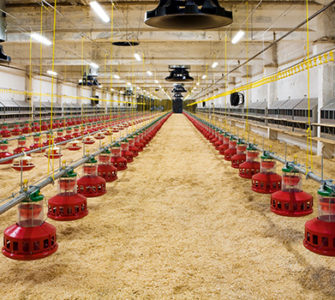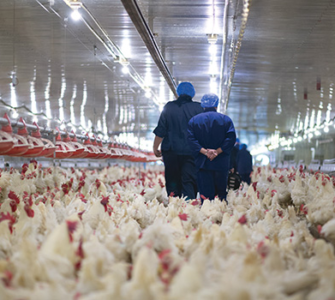Tackling stress key to protecting birds from coryza resurgence, says expert
Limiting stress in broiler flocks is key to preventing birds from succumbing to an infectious respiratory disease which is showing a resurgence in some areas of the US, according to a poultry expert.
Tom Tabler, poultry extension officer at Mississippi State University, said coryza, a bacterial infection which causes illness similar to the common cold, is a problem mostly encountered in backyard and commercial layer flocks.
But in recent months, outbreaks have been identified in broiler flocks, particularly in the Pennsylvania-Delmarva region of the US — a development which should put producers on alert for signs of the disease.
Speaking to Poultry Health Today, Tabler said the bacterial infection, which causes swollen sinuses, watery eyes and runny noses, does not usually cause high mortality in flocks.
However, infections often lead to secondary disease, such as mycoplasma in layers or E. coli in broilers, which can lead to mortality rates of as much as 25%.
NAE challenges
While infected birds do respond to medication, Tabler said the increase in no-antibiotics-ever (NAE) production means that broiler producers need to find ways to reduce the infection risk — particularly in areas where birds are reared in close environments and the bacteria has a chance to spread.
In addition to good biosecurity and vaccination, which is rarely administered to young birds, Tabler said he believes the most effective measure is to limit stress in flocks.
“Something that’s common, whether it’s a laying operation or a broiler operation, is that it’s oftentimes triggered by some type of stress set-up on those chickens,” he said.
“For instance, in a pullet house, when those chickens get ready to be moved from that pullet house to the laying house, someone’s got to go in, catch those chickens, move them onto a laying farm somewhere.
“That’s a lot of stress for those chickens, [and] it’s a good opportunity for coryza to set up because those birds are under stress. Same way with broilers.”
Management practices
Tabler said NAE production has put broiler management under the spotlight, making it necessary for producers to look more closely at issues such as litter management and bird house temperature.
“Wet litter’s going to affect the paw quality of those chickens,” he said. “Wet litter’s going to mean there’s more ammonia in the house that you have to deal with. Ammonia’s a stress on chickens.
“How well you manage your temperature profile in that house [is also an issue],” he added. “You don’t want to get them too hot or too cold. How well you manage the ventilation level…. It just means you’ve got to do a better job of staying on top of everything.
“If a grower is really good at doing that [they’ll be more successful at keeping chickens healthy] because stress is a bad thing. And once you get stress, unless your immune system is really good, you’re at risk of catching something.
“Coryza is one of those diseases that will take advantage of a compromised immune system.”
Quick diagnosis
For broiler producers who suspect coryza might be in their flocks, Tabler said diagnosing the strain quickly to understand which bacteria is present is key.
“The sooner you can get ahold of your service tech and let that person know that something doesn’t look right [the better],” he said.
“So, if your service tech was there yesterday and you go in today and hear a lot of noise in that flock, hear a lot of coughing and sneezing, see puffy heads, see watery eyes, call that service tech back and ask them to come back.
“It won’t be their typical day, but if you call them and tell them you think you’ve got something wrong, they will come back and check, just to make sure.”
Posted on June 2, 2021

















